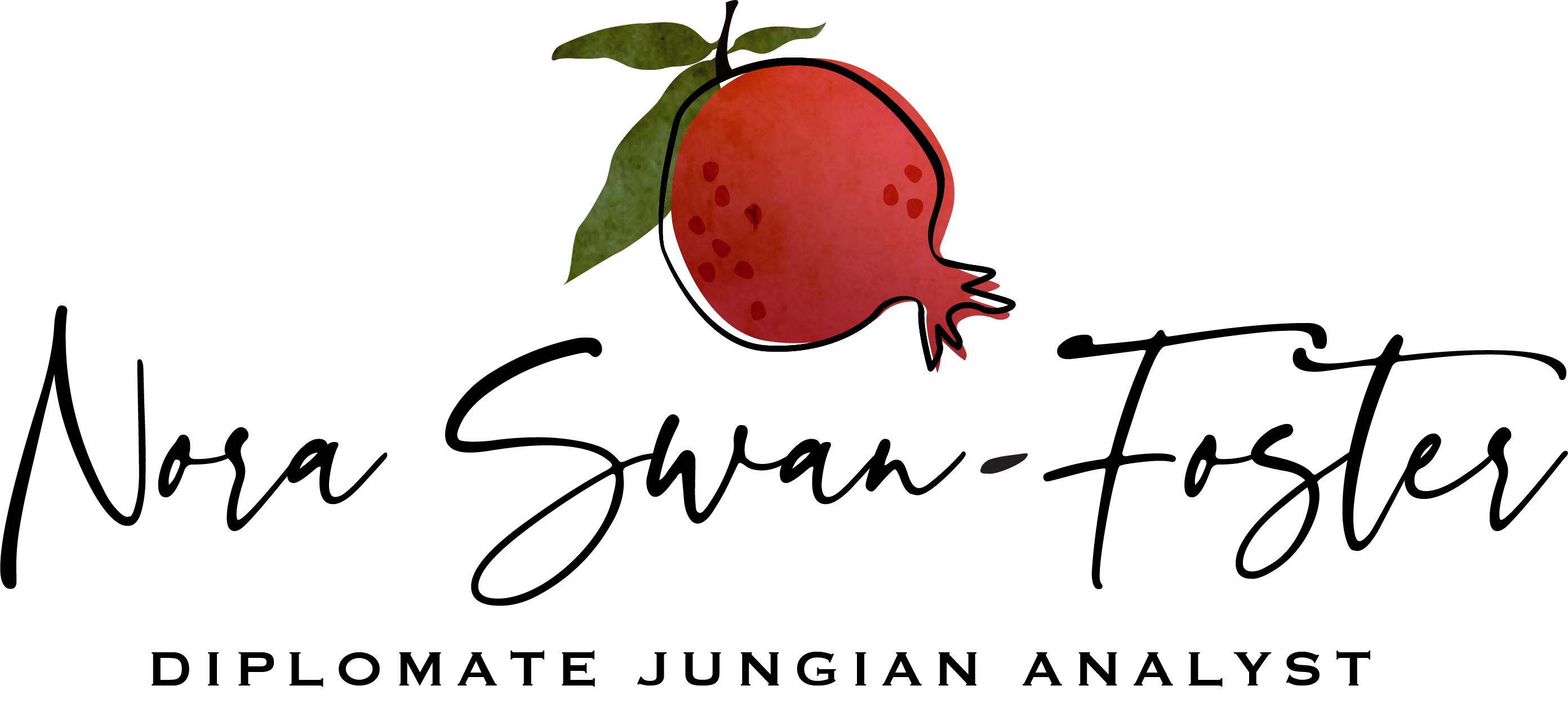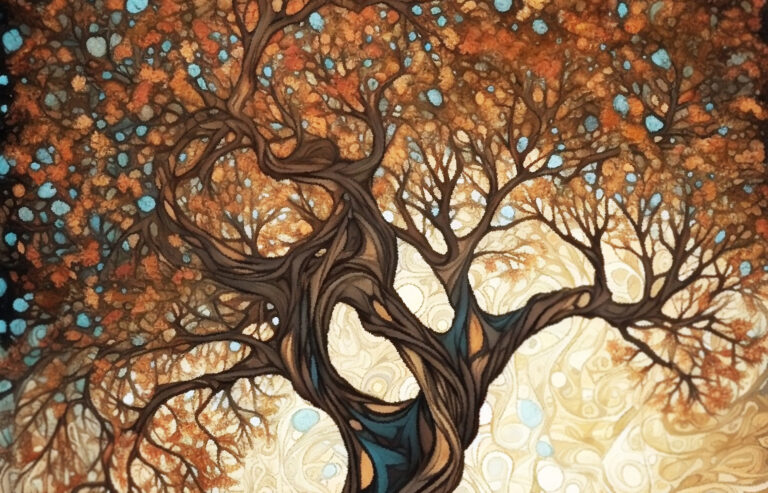Struggling with creative and spiritual issues is more common than one might expect and these issues do in fact demand courage as well as our ability to be vulnerable. Entering into Jungian analysis or psychotherapy is often described as a creative and spiritual process—an experience of working with the transpersonal, which is the life that exists beyond us as well as deep within us. The work is sacred and deeply personal as the greatest information comes to us from the unconscious; the challenge for us becomes how to listen and attend to its messages without dismissal.
Creativity
“The artist’s relative lack of adaptation turns out to his advantage; it enables him to follow his own yearnings far from the beaten path, and to discover what it is that would meet the unconscious needs of his age……art represents a process of self-regulation in the life of nations and epochs” –Jung (CW 15, 131).
Jung was keenly interested in the healing process of creativity for himself but also for his patients and how it manifests within the collective. He was also interested in the healing process by which symbols become known to us or to the culture; this led him to his ideas around the transcendent function, an energy-driven process of internal opposites that come together to form a metaphorical sausage maker that results in a new symbol, like a sausage!
Jung was keenly interested in the healing process of creativity for himself but also for his patients and how it manifests within the collective. He was also interested in the healing process by which symbols become known to us or to the culture; this led him to his ideas around the transcendent function, an energy-driven process of internal opposites that come together to form a metaphorical sausage maker that results in a new symbol, like a sausage!
The shuttling to and fro of arguments and affects represents the transcendent function of opposites…The confrontation of the two positions generates a tension charged with energy and creates a living, third thing…The transcendent function manifest itself as a quality of conjoined opposites. -Jung (CW8).
As our culture becomes increasingly more frenetic, demanding our time and psychic energy, we tend to have less time to give to the symbolic process expressed by the needs of our soul where there resides a pulsing creative and spiritual longing. Our soul is what stirs our imagination and without connection we may experience a great loss of connection to the creative mystery of life and what holds meaning for us as individuals. Analysis can offer the unique quiet time and space to access our imagination, to engage in a creative and relational process that may be awakened by dreams, journaling, art, movies, poetry, followed by the possibilities of what we make manifest through our visual journals.
Some artists arrive with disappointments, blocks and challenges that require the expansion and loosening of current views on life. Sometimes there is a necessary symbolic death occurring in the psyche after a large project has been completed; a vigil to the old through mourning must occur before a new process can emerge.
Creative work can be a lonely long process, but Jungian analysis both follows and investigates the natural unfolding of the creative instinct alongside the death instinct, opening new windows into our personality and our life. As Jung said about a creative life: “[it] always stands outside convention” (CW 17, 305), which places an individual in the position of being in exile, living slighting on the edge of one’s community.
Spirituality
“Too few people have experienced the divine image as the innermost possession of their own souls” –Jung (CW 12, 12).
Jung was one of the first recognized psychoanalysts to give psychological value to the religious nature of the psyche, which is why Jungian psychology is often referred to as depth psychology. Jung’s concept of the transpersonal was described by the Self, the religious aspect of the psyche that is both deep within us and all around us. Keeping one eye on the daily life, or chronos time, Jungian work simultaneously explores the archetypal depths through myth, fairy tales, symbols and other images emerging spontaneously from our sand tray, dreams or art, all of which exist in kairos time.
Jung’s ideas on the Self and transpersonal psychology emerged partially from his own childhood experiences, partially from an interest in Henry James work on psychology and the transpersonal aspect of the psyche, and his personal exploration and conceptualization of the structure of the psyche, which he often called the objective psyche or the Self. These fundamental precepts became known to Jung as an autonomous force within his own psyche through his painted images and active imaginations. Jung’s personal experience of inner work is often referred to as a creative confrontation with the unconscious; his personal process is documented in the Red Book. During this time of tremendously challenging inner work, he was also very productive in the outer world where he continued to teach, travel, write, and see patients.
The Red Book and NPR’s Story on the Red Book
Living through the wars, Jung saw directly how the loss of relationship to the gods is “the prime evil of neurosis” (CW 10, 367), leaving individuals and the collective floundering, surrounded by destruction, one-sidedness, and an internal emptiness with feelings of being orphaned and exiled. To Jung, the symbols, that reflect the multitude of archetypes throughout our daily life without us even paying attention, offer purpose in our life, connecting us to the meaning within our human existence. When our ego is cut off from the Self, we suffer tremendously, sometimes without even realizing what has happened. Awakening this relationship between the ego and the Self can be revived through such practices as active imagination, meditation, contemplation, prayer, hiking, sacred song, dance, or artmaking.
Grief and loss are probably one of the most predominant reasons we experience emotional symptoms and seek therapeutic support. The work of grief can be a complicated process that takes time and patience. It includes the complicated process of letting go and saying good-bye so as to allow for new life, but it is not a process we can predict or control. Each grieving journey has its own quality and narrative. Whether it be a loss of a pregnancy, a baby, a partner or loved one, a divorce or a job loss, the process of accepting the ending requires our ability to not minimize our experience so as to appear “normal” for those around us. A “new normal” begins to emerge as the loss becomes integrated into our life story. Dreams and art aid in the process of expressing what longs to be heard. There is no correct way to grieve; the loss teaches us each time anew how best to hold onto the thread and find our way out of a maze of painful darkness into a new life with meaning and purpose.
Depression and anxiety can be subtle or debilitating. Sometimes we don’t even realize that we’ve been defined and curtailed in our life by our emotional attitude. There are many schools of thought around treating anxiety and depression. Two basic approaches view the disorders as bad neurochemistry (traditional psychiatry) and/or bad thinking (cognitive behavioral). For both these models of treatment, the goal is to eliminate symptoms, one with medication, and the other with cognitive restructuring techniques. Often times both are used together and there can be positive results with changing people’s lives. How Jung viewed these symptoms provides the perspective that our human imperfections and deepest suffering has also has meaning and purpose.
While Jungian Analysts are certainly not anti-medication or against cognitive restructuring techniques, we do consider anxiety and depression as valued material from the unconscious. Such symptoms are viewed as reflections of something much deeper in the psyche that may be trying to emerge to encourage the individual to become more whole as an individual. Jung’s idea is that symptoms of anxiety and depression are sometimes purposive and functional.
Working analytically with depression and anxiety is oddly similar to opening unwanted gifts to see what they have to offer us. Some gifts are unexpected or difficult to receive. Committing to a period of consistent analysis or psychotherapy provides the safe place to dig into difficult issues, making for long-lasting results. Such symptoms herald in the message that a change in our life must be made and with the support of treatment, we can make the necessary changes sustainable. The time frame for depth work is determined by your psyche and cannot be determined by anyone, not even mental health professionals. Through the changes you make and your dreams, you will come to know when your therapeutic work is coming to a close.
Jung’s idea of becoming a whole person requires an individuation journey. With any individuation process, we must anticipate feeling guilt as we leave the old behind. As part of this process of leaving behind the old worn out ideas about who we are and what we do, we investigate new ways of living and expressing ourselves. We may feel burned out, be tired of our job, career or our caretaking style. We suddenly realize our relationships and parenting roles are shifting. We may also have a spiritual or creative crisis that ushers in a complete reevaluation of our life.
Traditionally, we hear that mid-life brings about sudden buying of a red sports car or having an affair. However, mid-life brings a change of consciousness too. If we hold the impulses of radical and immediate change, sit with the urgent thoughts and feelings, study our dreams, and explore our imagination rather than concretizing the psychological force that is pushing up from the unconscious, a mid-life transition may offer a doorway into a new attitude towards life and new levels of consciousness. In our work we will explore the deeper connections to your inner world as directed by the unconscious. Such soul searching can be both painful and nourishing; sometimes it is an opportunity that we can do nothing else but embrace with full commitment, vulnerability and courage.
The psychological journey of the childbearing period, from onset of menstruation through menopause, does not interest every woman, but for some, these are pivotal moments that contain life-changing events, memories and opportunities, and an opportunity to engage with the symbolic and archetypal material. As the above quote reveals, Jung was well aware of how the childbearing process poignantly expressed the transformations and the symbolic nature of the psyche, bringing psyche and soma into a powerful relationship that offers the possibility for transformation.
Some women spend years longing for a pregnancy, others who finally conceive only to experience a loss. Occasionally a woman is forced to choose to terminate a pregnancy. In addition, women who have experienced abuse discover that pregnancy and childbirth activate old emotional and physical obstacles that are difficult to shift. Traumatic surgeries or childbirth experiences layered upon traumatic personal histories benefit greatly by having a period of psychotherapy or Jungian analysis. Harboring shame and fear can inhibit a woman from getting the help she needs or wants, but these life transitions and difficult or even traumatic situations do not need to be shouldered alone.

